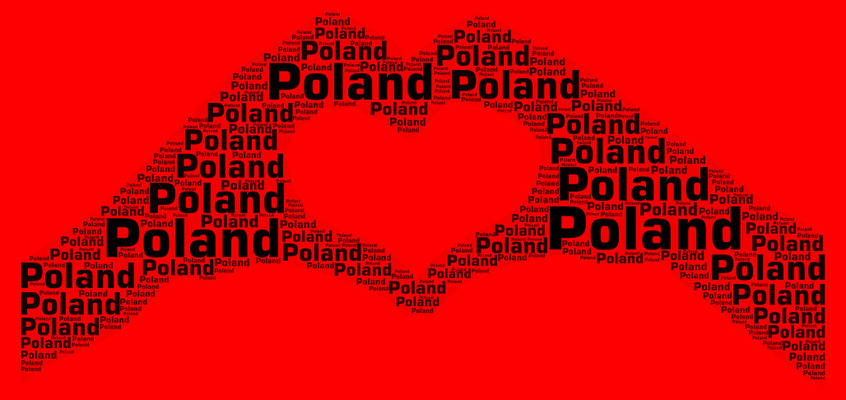
Historical events
After World War II, in 1945 Poland ended up in the Soviet occupation zone, even though they had technically ruled our terrains since they took control all around them in 1943. From the west, the “iron curtain” separated us. There was no information of what was happening in the west that could get in nor information from inside the country could go out. There was no democracy present. The prices were also rising. In 1980 meat prices rose, protests started. On 14th of August, strikes broke out in one of the shipyards in Gdańsk. The people who were striking wanted Anna Walentynowicz, an oppositionist in the People's Republic of Poland, co-founder of the Free Trade Unions and activist of the Solidarity Trade Union, to be put back in her position after she had been removed from it. Enterprises from all around the country joined the protests, with over 800 at the key point. The Inter-Enterprise Strike Committee, led by Lech Wałęsa, got established.
Another important event was when John Paul II became the pope. Pope John Paul II was born in 1920 in Wadowice, his real name is Karol Józef Wojtyla. He was orphaned at a very young age, and he had had a strong Christian faith since he was little. He became Pope on 16 October 1978, and he was the first non-Italian pope in almost 500 years, also the first one from a Slavic country! He was the pope for 26 years, so he was the third-longest serving pope after St Peter and Pope Pius IX.
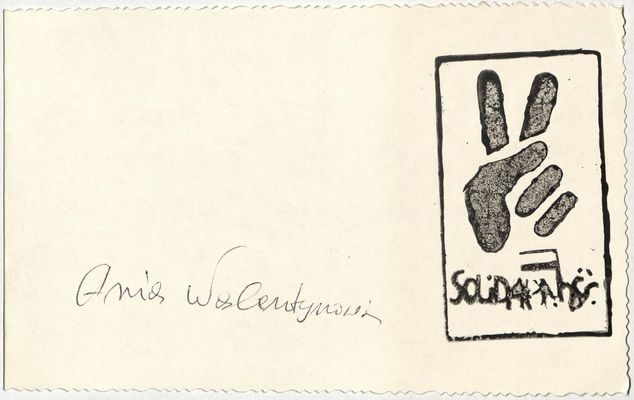
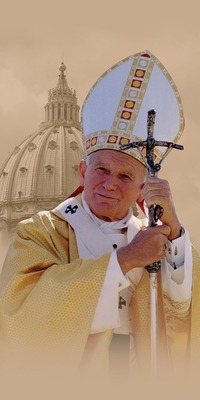 Pope John Paul II, Pixabay, CC0.
Pope John Paul II, Pixabay, CC0.
Souvenir card - Europeana 1989, Poland - Public Domain
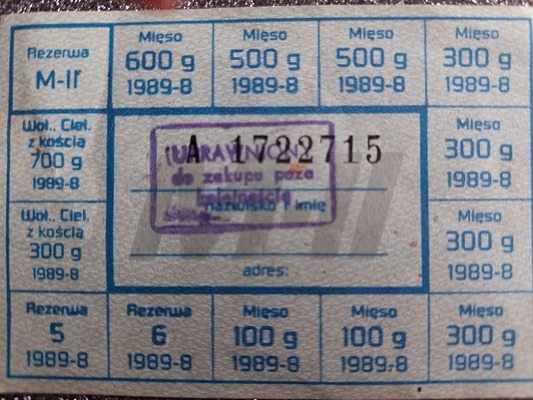 Meat cards
Meat cards
Polish lifestyle
1) social life
Polish social life in the 1950s was not easy and the country remained under the communisty rule. It was the time when queues to the shops were several-meter long and people had food cards, which were indicating how much and what you could buy.
2) fashion
People usually wore voluminous sweaters, leggings, bodysuits or tunics. The whole outfit was always complemented by colorful, plastic jewelry.
Makeup included sharp and dark eyebrows, lingered in hair and dark or bright red lips.
The most popular style icon in 1980 was Madonna. She started the rock style and was imitated by many Polish teenage girls.
3) sport
In the second half of the 20th century, and more specifically in 1972, Polish footballers won first place at the Olympic Games in Munich. In 1973 there was a match between England and Poland. We had a draw and that was enough to enter the World Cup. Later, the Polish national team took third place at the 1974 and 1982 World Championships.
4) celebrities
In the early 1970s Maryla Rodowicz released her debut studio album ‘Live ,My World', for which she received the status of a gold album thanks to the sales of 170 thousand copies. During the World CupOpening Ceremony in Munich Maryla Rodowwicz performed her well-known song ‘Football.” Maryla Rodowicz is a music icon always surprising her fans with creative outfits at her concerts.
5) Holidays and travelling
The first Polish Fiat 126p, commonly known as Maluch – ‘small Fiat” went off the production line in the FSM factory in Bielsko Biała on 6th June 1973. It was also nicknamed ‘Kaszlak”, meaning ‘the cougher’ because of the characteristic noise it was making when the engine was started. Due to the relatively low price and the fact it was so simple owners were able to fix the car themselves, it gained considerable popularity. However, it was not easy to buy this car in the communist times, one had to have not only money but also a voucher, and then be very lucky in a lottery. In our region, such lotteries were organized, for example, at coal mines for their workers. If you were lucky enough and won your dream car in the lottery, you could start packing and going on holiday. Yes, a four-person family travelled by the car to the seaside to spend a two-week holiday relaxing on the beach. The most imaginative ones even went to Bulgaria relying on their Maluch.
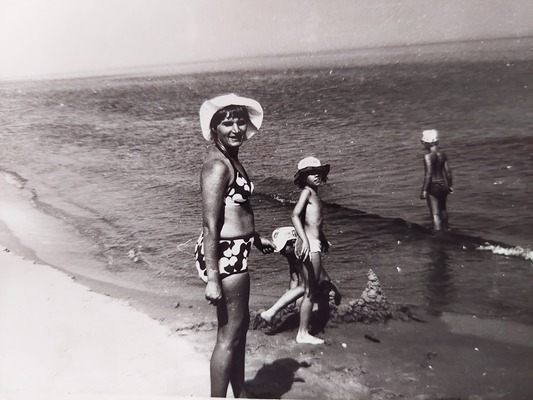
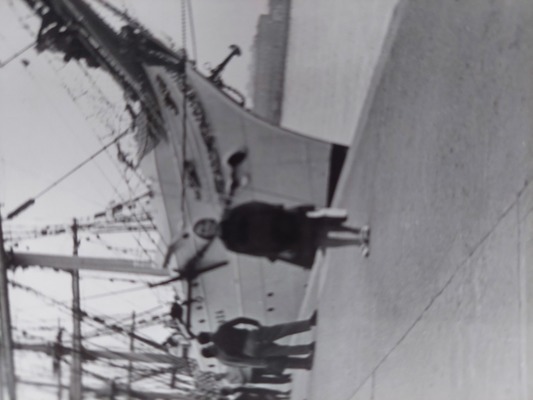 Family photos.
Family photos.
Another interesting thing connected with cars at that time and the situation in Poland was the fact that when martial law was introduced on December 13, 1981 there was a ban on buying petrol for private car owners. It was lifted on February 1, 1982 but limits were introduced: you could refuel three times a month, every 10 days (the dates depended on the last digit of the registration number). Owners of small Fiat were allowed to draw 10 liters at a time. Special fuel cards were used.
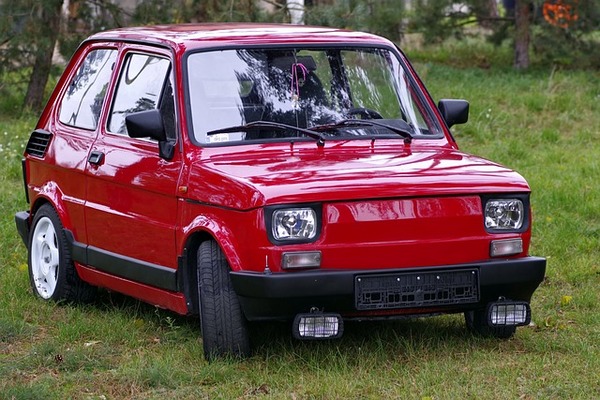
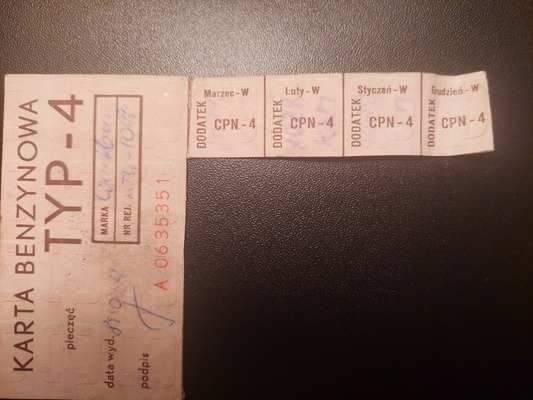 Fuel cards, own photo
Fuel cards, own photo
Small Fiat, Pixabay, CC0. Small Fiat commercial from the 70s
SCHOOLS IN POLAND
In the 1970s, you had to go to school from Monday to Saturday. There were no 1's or 6's in the grading system. These appeared from the 1990s. Russian was the obligatory part of the curriculum. Many historical facts were overlooked in the lessons, and teachers who did not adhere to the only and right propaganda left work with a wolf ticket. Religion was taught only in church rooms - catechesis entered schools in the last decade of the 20th century.
The present-day generation of 50-year-olds also remembers school appeals that were always characterized by singing a patriotic song.
Educational institutions of the past regime are primarily associated with cyclical fluoridation and a compulsory glass of milk for each student, especially on winter days. Fluoridation has survived to this day, but requires parental consent. Milk still appears in some primary schools - no longer in cups, but in cardboard boxes.
As a part of the so-called defense training implemented in the spirit of “hanging in the air” the Third World War, students in the 1970s were practicing at a shooting range, learning how to use sports rifles, abbreviated as kbks, and were trained in communication and first aid. ZPT, i.e. practical and technical classes, where you could learn practically everything - from basic issues related to electricity, through sewing and darning to baking cakes. It also disappeared from school life.
Former school pupils were distinguished by compulsory uniforms and later so called “aprons”(short for boys, longer for girls) in a uniform navy blue or blue color. They were made of plain polyester, almost "plastic", with white collars detachable with buttons.
A school shield was sewn on the right shoulder. The overzealous teachers with a strong jerk checked whether the shield was really properly sewn or whether it was on a safety pin. In the latter case, it could have ended up with a negative note in the class register.
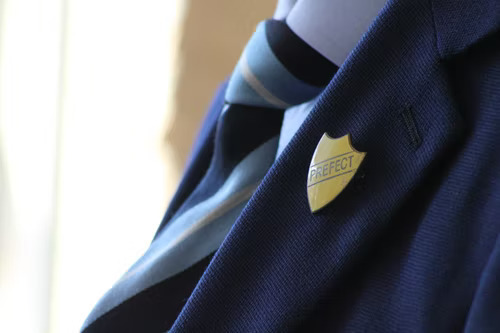
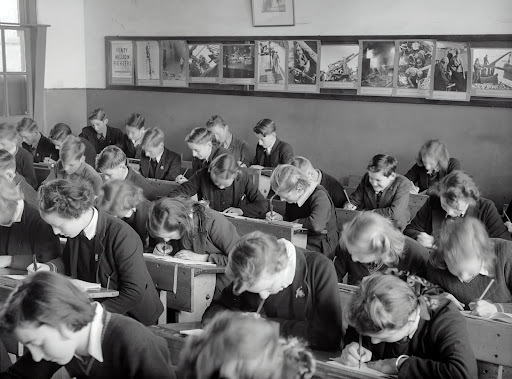
www.unsplash.com/photos